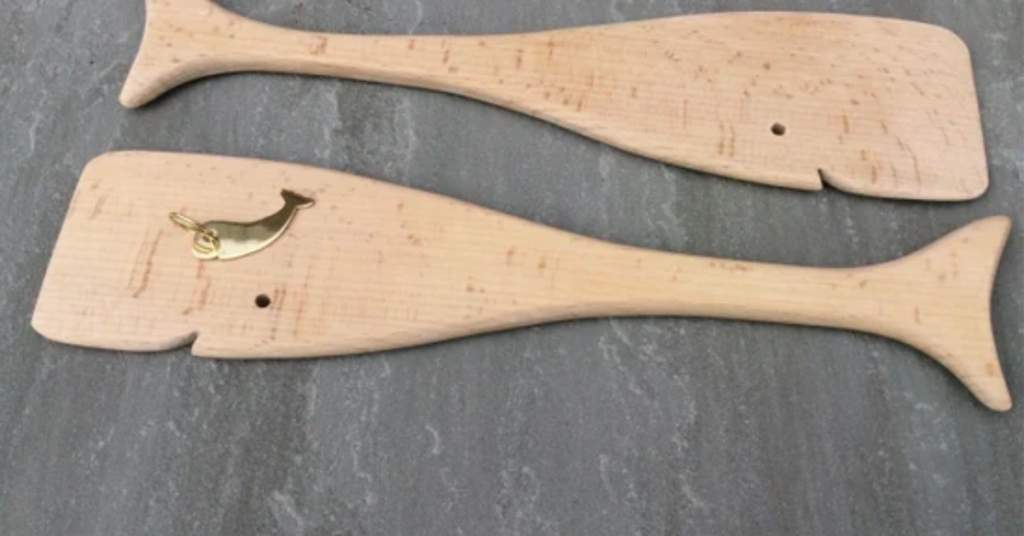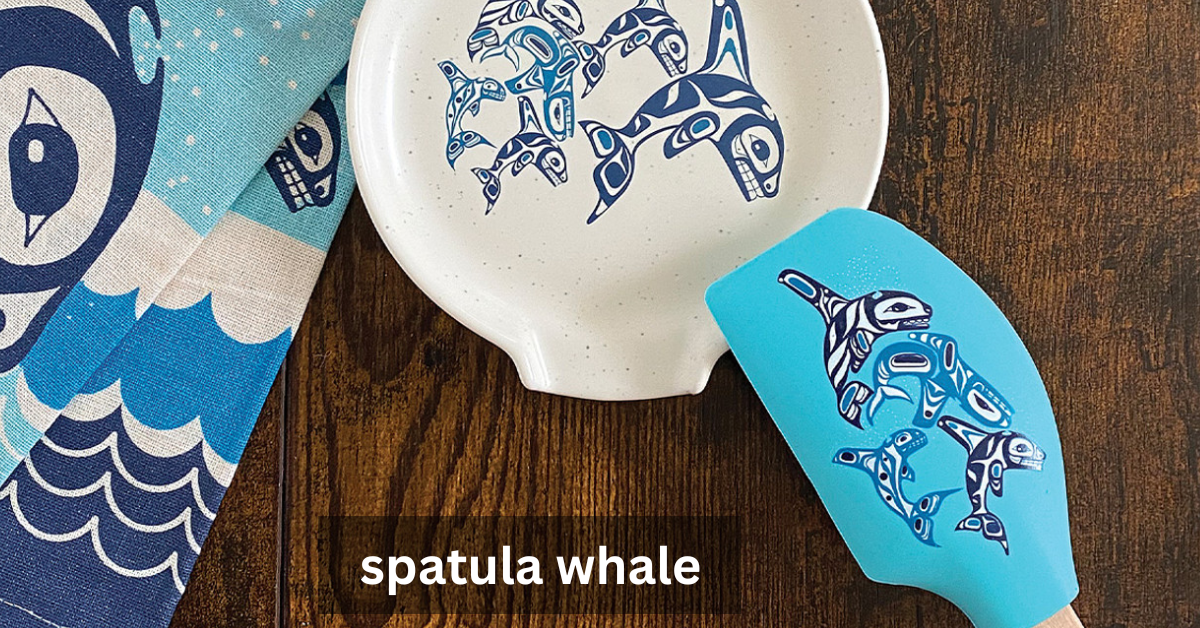The ocean is home to an incredible array of creatures, each with its own unique adaptations for survival. One such mysterious and fascinating creature is the spatula whale. Often referred to as one of the rarest deep-sea cetaceans, this whale captivates the imagination of researchers and ocean enthusiasts alike. Found primarily in the abyssal zone of the Pacific Ocean, the spatula whale, scientifically known as Platyplatis fliptus, represents the mysteries and wonders of marine biodiversity. With its distinctive spatula-shaped appendage and the ability to thrive in extreme ocean conditions, the spatula whale is a true testament to the wonders of nature.
In this article, we will explore what makes the spatula whale so unique, its habitat, feeding behavior, evolutionary adaptations, conservation challenges, and more. This deep-sea whale offers a glimpse into a world few have seen and even fewer truly understand.
What Makes the Spatula Whale Unique?

The spatula whale stands out not just for its rarity but for its fascinating physical and behavioral traits. Its most distinguishing feature is its spatula-shaped appendage, a unique adaptation that sets it apart from other cetaceans. This specialized organ plays a crucial role in its feeding behavior and offers insights into how life can thrive in the most inhospitable environments on Earth.
The whale’s hydrodynamic body and specialized feeding technique, along with its unique adaptations to cold and high ocean pressures, make it a key species for studying deep-sea ecosystems. As part of the Cetacea order, the spatula whale is closely related to other whales, dolphins, and porpoises, yet it exhibits a suite of extraordinary traits that make it one of the ocean’s most remarkable creatures.
Importance of Deep-Sea Species in Marine Ecosystems
The deep sea is a complex and often misunderstood environment, yet it is crucial to the overall health of the planet’s oceans. Species like the spatula whale play an essential role in maintaining the delicate balance of marine ecosystems. By interacting with benthic organisms—such as mollusks, crustaceans, and small fish—these creatures help control populations and support biodiversity in the deep-sea habitat. Furthermore, they are integral to nutrient cycling and energy flow in the abyssal zone.
The health of deep-sea species is a reflection of the state of marine biodiversity. Protecting creatures like the spatula whale helps preserve the intricate web of life in the ocean, ensuring the long-term viability of these vital ecosystems. As we continue to explore the depths of the ocean, these species remind us of the importance of understanding and conserving the mysteries of the deep.
The Fascinating Habitat of the Spatula Whale
Understanding the Abyssal Zone of the Pacific Ocean
The spatula whale calls the abyssal zone its home. This is the deepest, darkest, and coldest part of the ocean, where sunlight never penetrates. Located between 3,000 and 6,000 meters below the surface, the abyssal zone is a realm of extreme conditions. Despite the challenges of survival, it is teeming with life, albeit life that has adapted in extraordinary ways to survive.
In the Pacific Ocean, the spatula whale thrives in this environment, navigating through deep-sea trenches and abyssal plains. The whale’s ability to withstand high ocean pressures, extreme cold, and the absence of light is a testament to the incredible evolutionary adaptations that have allowed it to flourish in these conditions.
Deep-Sea Ecosystems and Their Role in Marine Biodiversity
Deep-sea ecosystems, like the one the spatula whale inhabits, are some of the most unexplored and least understood on Earth. These ecosystems are critical to the health of the entire ocean, providing habitats for a wide variety of rare marine creatures. Organisms that live in these environments are often highly specialized, and their survival depends on the delicate balance of conditions found in the abyss.
The spatula whale, with its unique feeding habits and adaptations, plays a crucial role in maintaining the health of these deep-sea ecosystems. By interacting with benthic organisms, the whale helps regulate the populations of species on the ocean floor, ensuring that no one species dominates and that the system remains balanced.
The Challenges of Surviving in the Deep Ocean
Surviving in the deep ocean is no easy feat. The challenges of high ocean pressure, extreme cold, and low oxygen levels make it one of the most hostile environments on Earth. Yet, the spatula whale has evolved remarkable adaptations to thrive in this harsh habitat. Its specialized body structure, including its blubber for insulation and a hydrodynamic form for efficient swimming, allows it to navigate these extreme conditions.
The challenges faced by the spatula whale also highlight the fragility of deep-sea ecosystems. As more human activities, such as deep-sea mining and ocean acidification, begin to impact the abyssal zone, creatures like the spatula whale are increasingly at risk. Understanding and protecting these animals is crucial for maintaining the health of deep-sea ecosystems.
Key Physical Features of the Spatula Whale
The Spatula-Shaped Appendage: A Unique Adaptation
One of the most fascinating features of the spatula whale is its spatula-shaped appendage. This distinctive adaptation is used for feeding and scraping the ocean floor, where it forages for benthic organisms such as mollusks and crustaceans. The unique shape of this appendage allows the whale to access hard-to-reach organisms buried in the ocean sediment, ensuring a consistent food source in the nutrient-poor deep-sea environment.
This feature also plays a role in the whale’s social interactions and communication. It is believed that the spatula-shaped appendage may be used during mating rituals, although more research is needed to fully understand the reproductive habits of this elusive species.
How the Whale’s Body Adapts to Deep-Sea Pressures and Cold
The deep ocean is an environment of extremes, with pressures reaching up to 1,000 times greater than at sea level. The spatula whale has evolved a unique skeletal structure to withstand these intense pressures, with a flexible yet durable body that allows it to move freely in the deep. Additionally, the whale’s thick layer of blubber provides insulation against the freezing temperatures of the abyssal zone, ensuring that it remains warm and buoyant in its extreme habitat.
These physical adaptations make the spatula whale one of the most specialized species in the ocean, capable of thriving in conditions that would be deadly to most other creatures.
Feeding Behavior of the Spatula Whale
Benthic Feeding: Scraping the Ocean Floor
The spatula whale is primarily a benthic feeder, meaning it feeds on organisms found on or near the ocean floor. Using its specialized spatula-shaped appendage, the whale scrapes the sediment to uncover its prey. This behavior is not only fascinating but essential for the health of the ocean floor ecosystems, as it helps to regulate the populations of benthic organisms and prevents overgrowth of certain species.
The whale’s feeding technique is an example of how life in the abyssal zone has adapted to thrive in an environment with limited food resources. By scraping the ocean floor, the spatula whale ensures that it can access a variety of food sources, including mollusks, crustaceans, and small fish, that would otherwise be difficult to obtain.
Diet of the Spatula Whale: Mollusks, Crustaceans, and More
The diet of the spatula whale consists primarily of benthic organisms such as mollusks, crustaceans, and small fish. These creatures are abundant in the deep-sea ecosystem, providing the whale with a diverse and nutritious food source. The whale’s ability to forage efficiently in the abyssal zone allows it to sustain itself in an environment where food is scarce.
By feeding on these organisms, the spatula whale plays an important role in maintaining the health and balance of the deep-sea ecosystem. Its feeding habits help control the populations of benthic species, ensuring that no one species dominates and that the ecosystem remains in equilibrium.
Why the Spatula Whale’s Feeding Technique is Vital for Ecosystem Balance
The spatula whale’s feeding technique is a key factor in maintaining the delicate balance of deep-sea ecosystems. By scraping the ocean floor for food, the whale helps prevent the overgrowth of certain benthic species and ensures that nutrients are distributed evenly throughout the ecosystem. This process also supports the biodiversity of the abyssal zone, as it helps create opportunities for other species to thrive.
Without the spatula whale and other benthic feeders, deep-sea ecosystems would likely become imbalanced, leading to the dominance of certain species and a decline in overall biodiversity.
Adaptations for Survival in the Deep Ocean
Evolutionary Features of Deep-Sea Whales
Over millions of years, deep-sea whales like the spatula whale have evolved a number of specialized features to survive in the abyssal zone. These features include their large, efficient bodies, thick blubber for insulation, and unique appendages designed for scraping the ocean floor. These adaptations have allowed them to thrive in one of the most hostile environments on Earth, where food is scarce, and conditions are extreme.
These evolutionary features also help deep-sea whales navigate the challenges of high ocean pressures and extreme cold. As researchers continue to study these animals, they are gaining valuable insights into how life can adapt to the most inhospitable environments on the planet.
Insulation, Buoyancy, and Skeletal Structure in Extreme Conditions
The deep ocean is a place of immense pressure and cold temperatures, yet the spatula whale has evolved a number of adaptations to survive these conditions. Its thick layer of blubber not only provides insulation against the freezing waters but also helps with buoyancy, allowing the whale to maintain its position in the water column.
Additionally, the whale’s flexible and strong skeletal structure allows it to withstand the immense pressure of the deep ocean. This combination of features ensures that the spatula whale can thrive in the abyssal zone, where other creatures would struggle to survive.
How the Spatula Whale Navigates High Ocean Pressures

High ocean pressure is one of the most defining characteristics of the deep ocean, but the spatula whale has evolved a number of adaptations that help it cope with this extreme condition. Its specialized skeletal structure is designed to withstand the crushing pressure of the abyssal zone, while its unique body shape ensures that it can move efficiently through the water. These adaptations allow the whale to thrive in an environment where most other species would be crushed under the weight of the ocean.
Conclusion
The spatula whale is a rare and unique species that plays an important role in maintaining the health of deep-sea ecosystems. Its specialized feeding techniques, unique adaptations to cold and high ocean pressures, and evolutionary features make it a true marvel of the deep ocean. As we continue to explore and learn about the abyssal zone, the spatula whale offers valuable insights into how life can thrive in the most extreme conditions.
By protecting this remarkable species and the ecosystems it inhabits, we ensure the survival of a key player in the ocean’s complex web of life. The spatula whale is not just a fascinating creature to study, but a symbol of the importance of conserving the biodiversity of the deep sea and ensuring that future generations can continue to marvel at the wonders of the ocean.
Frequently Asked Questions
How does the spatula whale feed?
The spatula whale feeds by scraping the ocean floor using its unique spatula-shaped appendage to access benthic organisms like mollusks, crustaceans, and small fish.
Where can you find the spatula whale?
The spatula whale is found primarily in the abyssal zone of the Pacific Ocean, one of the deepest and most unexplored parts of the ocean.
What are the threats to the spatula whale?
The main threats to the spatula whale include deep-sea mining, climate change, ocean acidification, and the destruction of its habitat.
Why is the spatula whale important for the ocean ecosystem?
The spatula whale plays a vital role in maintaining the balance of deep-sea ecosystems by feeding on benthic organisms and helping regulate the populations of these species. It also contributes to marine biodiversity by supporting healthy ocean floor ecosystems.
Stay in touch to get more updates & alerts on Creative Released! Thank you


